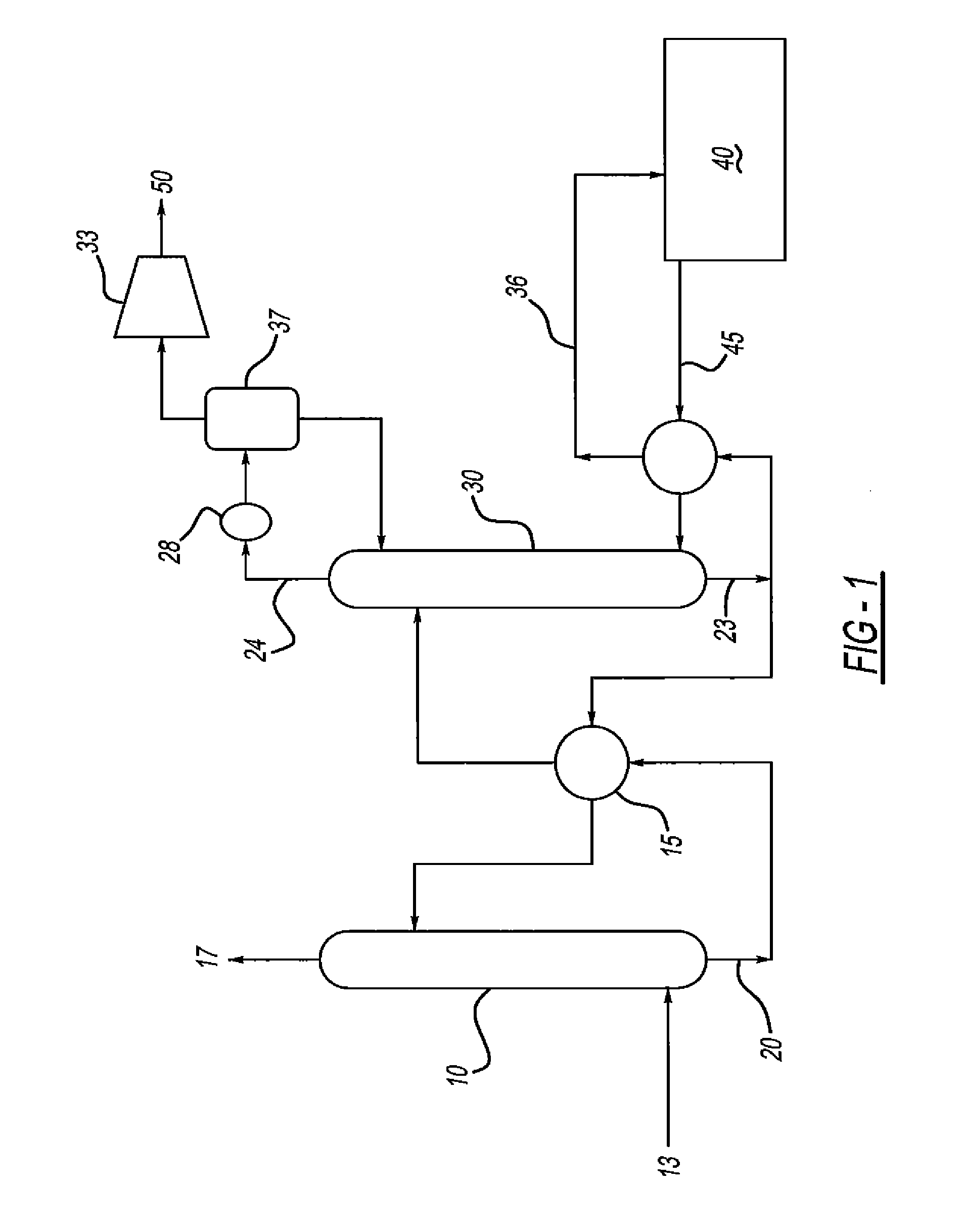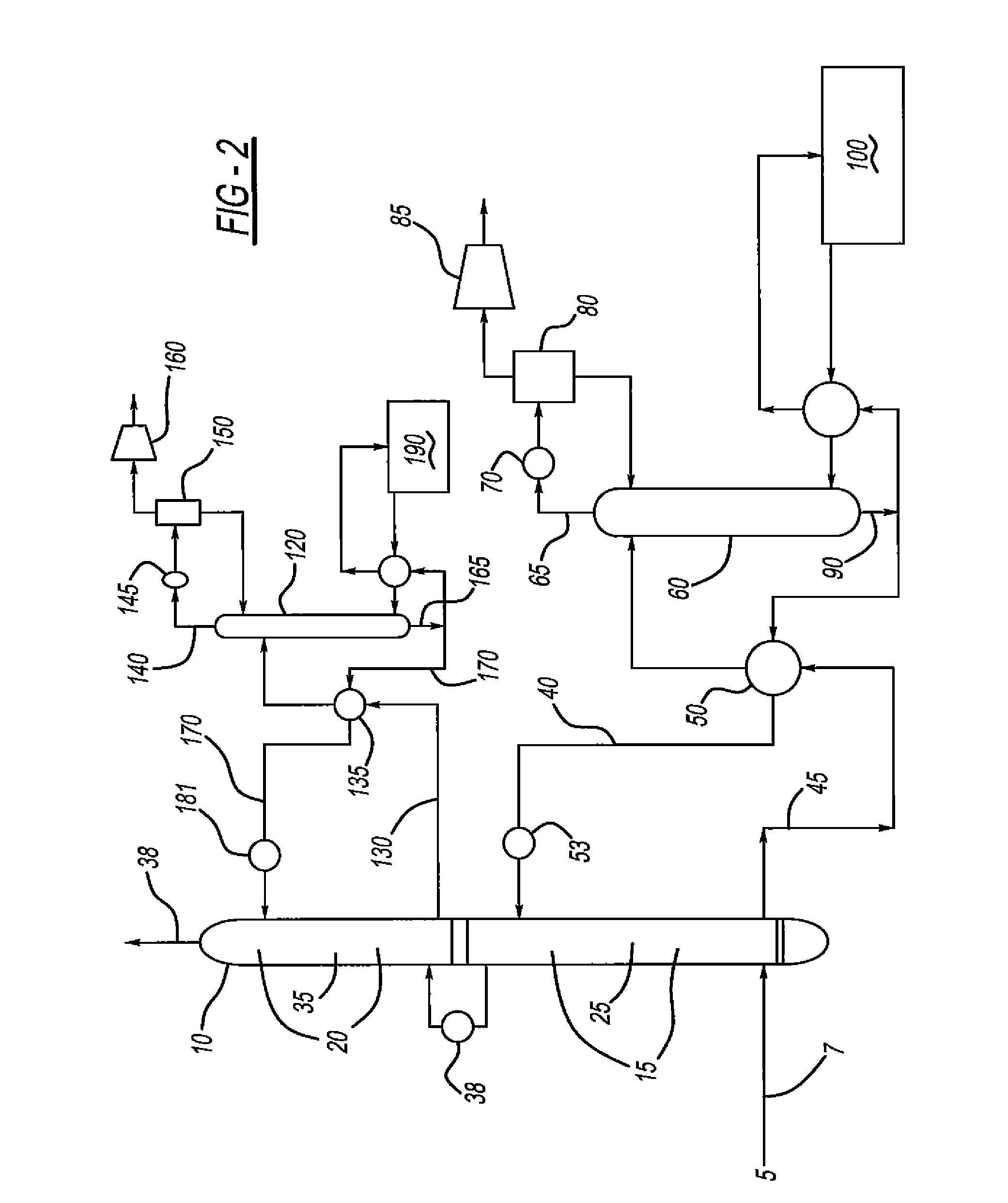Systems and methods for carbon dioxide absorption
a carbon dioxide and absorption technology, applied in the direction of gaseous fuels, hydrogen sulfides, separation processes, etc., can solve the problems of reducing the recirculation rate of amine systems, affecting the recirculation rate of amine, so as to reduce the overall energy required and reduce the capital cost
- Summary
- Abstract
- Description
- Claims
- Application Information
AI Technical Summary
Benefits of technology
Problems solved by technology
Method used
Image
Examples
example 1
[0054]Computer modeling was performed to determine the energy required to remove 90% of the CO2 from a flue gas in a conventional amine scrubber process (see FIG. 1). The process was modeled in ProMax (a commercial amine process simulator) with both a standard aqueous MEA solution (MEA+Water) and an aqueous ternary amine blend (MEA+MDEA+Piperazine+Water). The composition of the ternary blend was varied, and the energy required to regenerate the blend following absorption of CO2 was determined. The properties of the hypothetical flue gas used in this testing is shown in Table 1 and Table 2, while the amine compositions tested (with corresponding regenerator reboiler duties) are shown in Table 3. The data of Table 3 is graphically depicted in FIGS. 3-5. As seen in Table 3, the reboiler duty (in MMBTU / hr) required to regenerate the ternary amine blend was usually less than MEA alone. The mixtures of MDEA and MEA containing 15 wt % piperazine had the lowest regeneration energy requireme...
PUM
| Property | Measurement | Unit |
|---|---|---|
| pressure | aaaaa | aaaaa |
| pressure | aaaaa | aaaaa |
| pressure | aaaaa | aaaaa |
Abstract
Description
Claims
Application Information
 Login to View More
Login to View More - R&D
- Intellectual Property
- Life Sciences
- Materials
- Tech Scout
- Unparalleled Data Quality
- Higher Quality Content
- 60% Fewer Hallucinations
Browse by: Latest US Patents, China's latest patents, Technical Efficacy Thesaurus, Application Domain, Technology Topic, Popular Technical Reports.
© 2025 PatSnap. All rights reserved.Legal|Privacy policy|Modern Slavery Act Transparency Statement|Sitemap|About US| Contact US: help@patsnap.com



